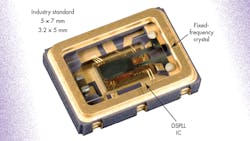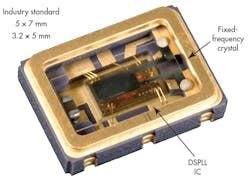When Instant Gratification is a Good Thing
The desire for instant gratification has recently fallen on hard times. Instant gratification has been an accepted privilege in our modern, technologically advanced society. It used to be okay to want everything—and want it now. Microwaved meals in three minutes. News, weather, and sports became 24 hours a day on TV. Smartphones, instant messaging, and the Internet connect us anywhere, any time. Thanks to one technology-driven convenience after another, life has become a stream of “instants”—instant access to information and online orders, instant coffee, instant six-pack abs, instant everything.
Nowadays, instant gratification seems to be on the wane, and the concept of delayed gratification is in vogue. Delayed gratification goes hand-in-hand with the revived virtues of austerity and thriftiness in the wake of the worst economic meltdown since the Great Depression. Fast food is giving way to the slow food movement, which entails the shocking idea of cooking food from scratch and enjoying it at a leisurely pace with family and friends. Tiring of Twitter and Facebook, people are shutting off their cell phones and laptops and reconnecting—in person—with friends, family, neighbors, and the great outdoors. The wisdom provided by an old proverb, “Good things come to those who wait,” seems just as relevant today as when it was written thousands of years ago.
This file type includes high resolution graphics and schematics when applicable.
I believe there are a time and a place for instant gratification and delayed gratification. Both concepts can happily coexist. Instant gratification is a founding principle of our Internet society, and we should continue to expect businesses to deliver products and services in a timely and efficient manner.
That leads me to crystal oscillators (XOs)—fundamental timing components used in virtually every electronic system. During a recent customer visit, a purchasing manager confided in me that his primary oscillator supplier was pushing deliveries out for months, resulting in lead times greater than 26 weeks. Wow! How can a supplier to the electronics industry, which provides the engine that feeds our Internet economy and a legitimate business need for instant gratification, expect to remain competitive with six-month lead times?
It turns out that traditional crystal oscillators, which rely on quartz as their frequency reference, must be custom-cut, polished, processed, and assembled for every unique frequency. The potential exists for yield fallout during every step in the manufacturing flow. This mechanically intensive process becomes more difficult with higher frequencies, because the frequency of oscillation is inversely proportional to the crystal thickness, and crystals become more brittle as they get thinner. And the thinner the crystal, the more sensitive it is to aging.
Contamination inside the hermetically sealed crystal oscillator package can adversely impact the XO’s aging performance and ability to start up reliably over the product’s lifetime. Even the last step of the oscillator manufacturing process—seam-welding the lid onto the package cavity—can induce strain on the crystal, which may result in a ppm shift that causes the device to fail the outgoing test.
To further compound these challenges, the supply chain becomes inordinately more complex with the proliferation of unique frequencies. Raw materials, including crystal blanks and ceramic substrates, must be carefully managed across hundreds if not thousands of SKUs to keep XO factories humming, and ensure supply-chain continuity for end customers. Collectively, these complexity factors result in long, highly variable lead times, especially for custom frequency oscillators.
Other IC suppliers have attempted to simplify the XO manufacturing process by replacing fixed-frequency custom oscillators with a phase-locked-loop (PLL)-based oscillator solution. In this case, the PLL multiplies the crystal frequency by a fixed amount to produce the target frequency of interest.
Traditionally, these PLL-based solutions have suffered from three serious drawbacks. First, the PLL adds significant jitter to the oscillator’s output clock, often making it impossible to use these programmable solutions to provide reference timing for performance-sensitive SerDes devices. Second, these solutions provide little to no on-board power-supply filtering. Switching noise on the power supply in an end application can routinely add 10 to 50 ps rms phase jitter to the XO’s output clock signal, increasing XO-induced risk of the design failing system-level jitter compliance testing. Third, these solutions are often only available for common frequencies. Most support a handful of frequencies, forcing XO manufacturers to continue relying on their traditional, complex manufacturing model for most frequencies.
Tech Solutions Overcome XO Issues
Silicon Labs developed proprietary, innovative DSPLL technology to address the myriad constraints associated with legacy crystal oscillators. DSPLL technology helps address the supply-chain headaches associated with high-frequency, low-jitter oscillators often used to provide critical timing for high-speed SerDes/PHYs. The DSPLL architecture’s PLL-based approach can synthesize any frequency from 10 MHz to 1.4 GHz from common, low-frequency, easy-to-manufacture crystals. This frequency flexibility eliminates the need to use unique crystals for each frequency, simplifying the oscillator supply chain. The figure shows a cutaway view of a quartz-based XO package with DSPLL circuitry.
Silicon Labs’ DSPLL-based oscillators use standard, low-frequency AT-cut crystals that are four times thicker than comparable solutions, helping to improve manufacturability, long-term aging, and reliability. XOs and VCXOs based on DSPLL technology have jitter as low as 0.2 ps rms, suiting them for high-speed serial interface applications such as Gigabit Ethernet, 10 Gigabit Ethernet, SONET/SDH, 10/40/100G OTN, JESD204B, 3G SDI, 6G SDI, 12G SDI, and PCI Express. In addition to single-frequency XOs and VCXOs, the company offers multi-frequency XO/VCXOs that can replace multiple oscillators with a single component. On top of that, DSPLL-based crystal oscillators are available with lead times as short as 24 hours. That should help satisfy the craving for instant gratification.
So take a word of advice from Abraham Lincoln, who said, “Things may come to those who wait, but only the things left by those who hustle.”
This file type includes high resolution graphics and schematics when applicable.
Delayed gratification is a wonderful philosophy for your personal and family life. But in today’s frog-leaps-frog global economy, ultra-fast time to market remains a necessity when it comes to developing your next application and getting a product out the door ahead of the competition. By relying on quick-turn components that deliver instant gratification, developers can complete their projects on deadline, if not ahead of schedule, and have more time to enjoy the things in life that should proceed at a snail’s pace. Here’s hoping you enjoy your next home-cooked meal or a walk in the park unencumbered by cell-phone calls, emails, or worries about XO/VCXO lead times.
James Wilson, marketing director for Silicon Labs’ timing products, earned a BS in mechanical engineering and master’s degree in business administration from the University of Texas at Austin. Previously, he worked at Freescale Semiconductor’s networking and communications systems group in Austin.


